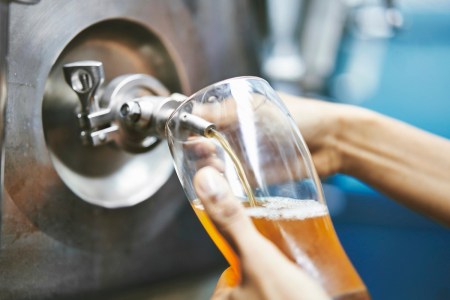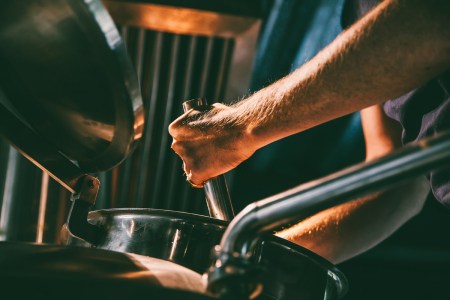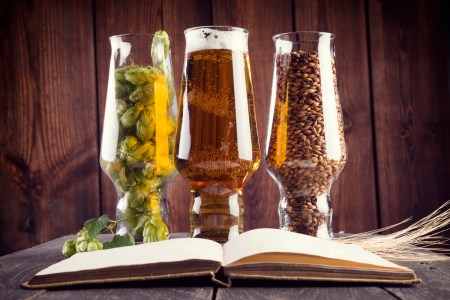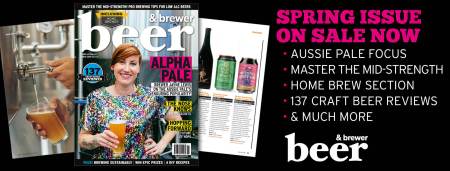
In his continuing series of Deep Dive articles, Brightstar‘s brewer Steve Brockman delves into some of his best tips and tricks for making mid-strengths sing.
If you were to cast a quick eye over the Australian brewing scene of the last 30 years, you would be able to easily spot a consistent beer trend. A volumetric tax excise regime means that the more alcoholic a product is, the more brewers and breweries have to pay in excise tax. As a result, many beers in Australia have tended to be between 4.0 and 6.0% alcohol. Because of this it can be said that Aussie brewers are some of the best in the world when it comes to driving flavour, balance and body in lower alcohol beers. So how can you make these mighty mids?
What is mid-strength?
Firstly, let’s define the category. Broadly speaking it’s an evolving spectrum of beers that are between 3.5 and 4.5% alcohol by volume. Full-strength is deemed above 4.5%, and low alcohol is generally sub 3.5% ABV. “No alcohol” can contain up to 0.5% alcohol. Within this small slither of alcohol boundaries, many of Australia’s highest selling beers fit within the mid-strength definition, for example XXXX Gold, Great Northern, Hahn Super Dry 3.5 and Carlton Mid.
To many beer drinkers, mid-strength beer is often derided as low flavoured and thin-bodied. But many modern craft classics buck this trend – think Bridge Road’s Little Bling, Pirate Life’s Throwback IPA and Colonial Small Ale are just some of many mid-strengths delivering big flavour on small ABVs. But how do they do it?
Malt
When constructing a mid-strength recipe, it’s often tempting to take a regular beer style and then adjust it to make it lower in alcohol. Brewers should be mindful, however, that alcohol itself is a flavour driver and simply scaling down a recipe so that it is lower in alcohol will not yield great results. Care has to be taken to replace the flavours lost, and build a fuller bodied product.
Consider Rogers’ Ale from Little Creatures. Named after Roger Bussell and Roger Bailey, it was the former who took on the task of helping to improve an out-of-favour mid-strength – the Amber Ale – in the Little Creature line-up. The beer now is often described as a bit of a hybrid: a mix between the body of an English Bitter, with the hopping schedule of an American Amber ale. To achieve this Bussell and the team at Little Creatures tweaked the recipe to include more Caramalt, bittered with East Kent Goldings and late hopped with US Cascade and Australian-grown Galaxy.
Lessons can be learned from the Amber Ale redevelopment: increasing or introducing caramel malts into the malt bill lends sweetness that can then carry higher bittering and hopping loads. The hop bill is clean up front, a nod to English Bitter heritage, and is deftly balanced with newer world hops in the end. The result is a great beer, and one that most people don’t realise is a lower alcohol product.
Including caramel and crystal malts, especially from the English maltsters, can help to boost body. Other grains, such as wheat or spelt, are higher in proteins that positively affect head retention. Wheat can make up to 15 to 40% of a malt grist; higher proportions can start to result in lauter and run-off problems.

If you’re really chasing a fuller, thicker beer, using flaked oats, flaked barley and flaked wheat can significantly increase the perception of a bigger bodied beer. These flaked grains contain higher levels of beta-glucans which add viscosity to beer.
Specialty malts such as Dextrin Malt and Carapils can also improve the perception of the body, and also help to maintain good head retention. Deft use of chocolate or lighter roast malts, such as Weyermann’s Carafa I, can add yet another layer of flavour and bring beers within recommended colour ranges.
Increasing the mash temperature is a must. A mash temperature of 68°C to 70°C ensures plenty of body is left in the beer at the end of fermentation. Aim for a longer boil too – the longer the boil, the more Maillard reactions take place. Honey, malty, toffee and lighter chocolate flavours can be derived from a longer boil and add real depth to a lighter alcohol beer. If you’re worried about your post-boil gravity, simply replace enough water to hit your desired target. Rest assured that any flavour hard won in the kettle will carry through any minor gravity adjustments.
Water
Getting your water chemistry right is the cherry-on-top of brewing. If you nail all the fundamentals of brewing, you should end up with a good beer, but small changes via brewing salt additions can take that good beer and elevate it into a great beer.
Water chemistry can be, ironically, a relatively dry subject, but if you’d like to brush up and learn more, dive into John Palmer’s book Water. There are also tools out there like Martin Brungard’s famous Bru’n Water spreadsheets, or apps such as BeerSmith and Brewfather. You can simply select your current water profile, and then select a water profile that suits the style of beer you’re brewing. The calculators do the rest and let you know what salts you can add into the mash and the sparge.
In very general terms, you can add chloride to boost the perceived fullness of a beer. Many current NEIPAs work on a chloride to sulphate ratio up to 3:1 to present the fuller bodied, pillowy mouthfeel that’s characteristic of the style.
Yeast
There are many options when it comes to yeast, but the simple core strains often give great results.
Yeasts with English origins will often have lower rates of attenuation, and leave more body in the final product. Yeasts such as White Labs WLP002, Danstar Windsor and Fermentis Safale S-04 can be great additions to a lower alcohol beer.
Fermentation is also a key driver of flavour. Take a minute to think about the overall aim of the beer. If you’re looking to have fruity hops on the nose, create some of that fruitiness with yeast-derived esters by turning up the fermentation temperature. Generally for a full bodied beer, ale yeasts will be the best option. Try to ferment towards the higher end of the recommended temperature range.

Hops
If you’re just scaling down a standard beer recipe to make it mid-strength, hops will often be the downfall. Adding the same proportion of hops will often not deliver the same hop character in a lower alcohol and can overdo it. Bitterness and hop-derived flavour and aroma is best balanced according to the malt bill, rather than alcohol.
An easy way to calculate the hops required for your next mid-strength is to brew to the BU:GU ratio. The ratio is a measurement of Bitterness Units (measured in IBUs) to Gravity Units (Original gravity, measured in Specific Gravity points, divided by 1000). There are plenty of charts and tables to find the approximate BU:GU ratio for any beer style you’d like to brew.
Wheat beers sit somewhere around the 0.25 BU:GU mark, pale ales 0.70 and IPAs neatly on the 1.0 BU:GU ratio. This ratio gives you the ballpark in which to aim for, but make sure you look at your recipe as a whole. If there is a higher level of crystal or caramel malt, a higher rate of hopping (specifically bittering hops) can bring balance and avoid overly sweet, syrupy beer. Dry hopping can also be used to add fresh hop character, elevating relatively normal beers to something special. Don’t be afraid to use aroma hops late in the boil to pack a punchy nose for a relatively small beer.
Thinking outside the box
Instead of reinventing the wheel and creating recipes from scratch, turn to European brewing traditions to find inspiration and building blocks for your mid-strength recipes.
Saisons, especially French-style, are conventionally mid-strength ales. In recent years many saisons have been amplified, resulting in higher alcohol booze bombs. But their traditional counterparts are often much lower in alcohol, bone dry and deceptively hoppy.
Berliner Weisse – a soured wheat beer from Germany – is also a lower alcohol beer that proves popular with beer drinkers and “non-beer” drinkers alike.
Moving into fuller-bodied ales, English style milds and bitters are a great category of beers to emulate. Designed to be both full-bodied and easy-drinking, milds and bitters form the backbone of traditional pub culture in the UK and can be a great starting point when developing recipes. A little further north, 60 Shilling Ales out of Scotland are ruby red, infinitely smooth pints of deliciousness.
Use the beer styles to provide springboards for your ideas.
Fancy a hop forward easy-drinker? Lean on saison’s dry finish and dry hop with new world varieties such as Citra and Mosaic.
Fancy a beer to warm up during the wet weather? You could take an English style mild and incorporate a small proportion of smoked malt to add depth of flavour and interest. You could add dark roasted malts to a bitter, you can fruit a Berliner Weisse.
And remember, just because a beer is lower alcohol doesn’t mean it can’t be full-bodied and full of flavour!
Steve’s Deep Dive articles appear in every issue of Beer & Brewer. Subscribe here.

